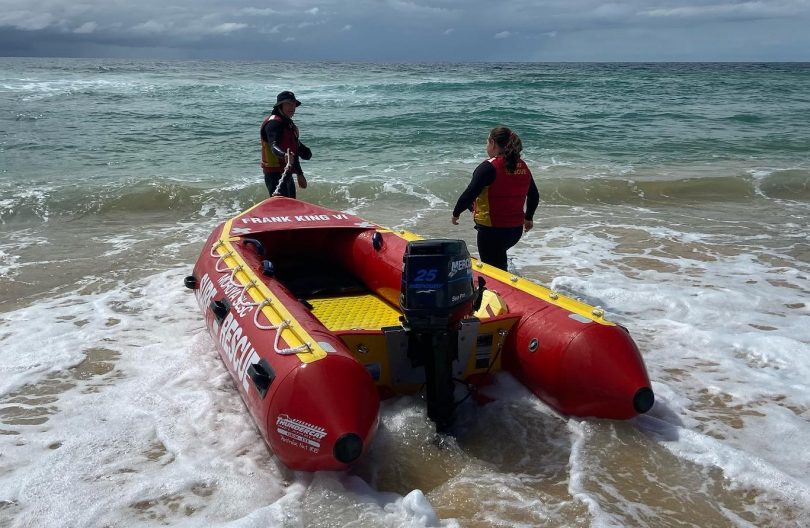
Surf lifesavers on duty at Moruya Beach. Photo: Moruya SLSC.
Shark-spotting drones will become a familiar sight at more South Coast beaches this summer, with Surf Life Saving NSW extending its coverage to every coastal local government area in the state.
More than 50 NSW beaches will be patrolled this season, with unmanned aerial vehicle pilots employed to watch over swimmers and surfers through an expanded shark surveillance program.
Last year drones were used by the Mollymook, Batemans Bay, Tathra and Pambula Beach clubs and this year, Broulee Surfers and Narooma will join the fold.
The new flights began last weekend (18 September) in line with the start of surf patrols by lifesavers and lifeguards.
“We want to applaud the Minister for Agriculture Adam Marshall and the NSW Government for committing to do everything they can to keep people safe by boosting UAV capability and we are looking forward to playing our part in the program,” SLSNSW President George Shales said.
“Alongside their primary use for shark mitigation, the UAVs are an additional tool to assist volunteer lifesavers and lifeguards identify other hazards such as rip currents, patrol outside flagged swimming areas and are an integral part of search and rescue operations.”
Drownings at unpatrolled locations were a key area of concern highlighted in the recent NSW Coastal Safety Report.
Released last week, the report detailed an alarming increase in drownings, including some findings around a spike in incidents and drownings that have occurred following the relaxation of COVID-19 restrictions.
There is a very real fear that the risk of coastal drownings will increase coming into summer as restrictions ease and people flock to the coast for recreation or holidays.
The extension to the drone program will see more than 200 pilots employed along the NSW coastline, predominantly in regional areas, to help improve safety, with these pilots expected to deliver in excess of 25,000 flights across the 50 locations.
The cost-effective, non-invasive UAV technology has proven to be successful at keeping swimmers and surfers safe, while minimising the impact on marine life.
Since the program started three years ago, the public response has been overwhelmingly positive, with people reporting greater confidence entering the water at locations where UAVs are operating.
New to the program this year will be the trialling of technology designed to extend the reach of the UAV ‘eyes in the sky’, with long-range endurance flight trials which could offer the possibility of exponentially increasing the coastal area covered.
SLSNSW will also be further incorporating Artificial Intelligence technology in UAV services to complement the skill of pilots and extend capability along the coastline.
“We’ve shown this technology is here to stay and hope that with greater coverage we can save even more lives,” Mr Shales said.
For information about patrol times, weather and beach locations, visit Beachsafe, or download the Beachsafe app.








